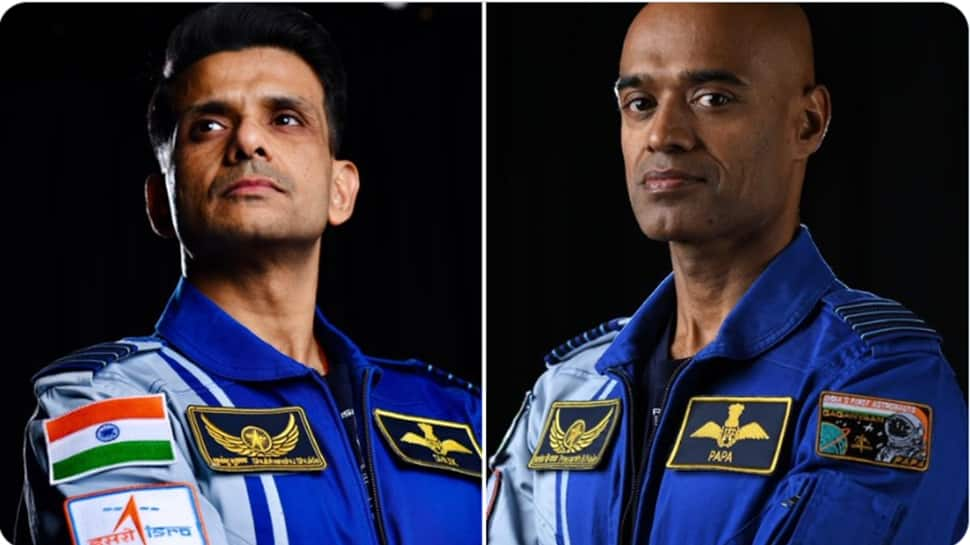On May 25, 2025, Indian astronaut Group Captain Shubhanshu Shukla and his three crewmates entered quarantine, gearing up for a historic journey. The Axiom-4 (Ax-4) mission, a joint effort by Axiom Space, NASA, the European Space Agency (ESA), and the Indian Space Research Organisation (ISRO), is set to launch no earlier than June 8, 2025, at 6:41 pm IST from the Kennedy Space Centre in Florida. Aboard SpaceX’s Falcon-9 rocket and Dragon spacecraft, Shukla will become the first Indian astronaut to visit the International Space Station (ISS). But why has India spent Rs 550 crore on this mission? What experiments will India conduct, and how will this bold step boost the Gaganyaan project? Let’s find out.
A Historic Mission with Big Goals
The Ax-4 mission is a 14-day trip docked at the ISS, where Shukla and his crew will carry out exciting experiments, connect with people worldwide, and test new technologies in the weightless environment of space. For India, this is a proud moment to show the world that we can lead in space exploration. The Rs 550 crore covers Shukla’s seat and 12 Indian experiments, seven of which focus on biology, with Shukla leading the research.
This mission is a vital step for ISRO’s Gaganyaan project, India’s first manned space mission, planned for 2026. Shukla’s experience—living in space, conducting experiments, and following global safety rules—will help ISRO prepare for Gaganyaan. It’s like practicing for a big cricket match before the final game.
Why Spend Rs 550 Crore?
Some might wonder: Why spend so much on one mission? The answer is simple—it’s an investment in India’s future. The Rs 550 crore will bring knowledge, skills, and global partnerships that will power Gaganyaan and future projects like the Bharatiya Antariksh Station, planned for 2035. Here’s why it’s worth it:
1.Real Training : Shukla, one of Gaganyaan’s four astronauts, will learn how to live and work in space, handle emergencies, and use ISS equipment. This hands-on experience is better than any training on Earth.
2.Global Teamwork : Ax-4 builds strong ties with NASA, ESA, and Axiom Space, giving India access to advanced technology and future collaborations—key for becoming a space leader.
3. Scientific Discoveries : The 12 experiments will unlock new knowledge, helping both space missions and life on Earth, like finding cures for muscle diseases.
4. Inspiring Kids : Shukla’s journey will motivate students to study science. His live chats with schoolchildren from the ISS will show that big dreams are possible.
India’s Experiments:
India’s 12 experiments on Ax-4 are designed to solve space challenges and improve life on Earth. They focus on biology, human health, and technology. Here’s what they’re about, explained simply:
– Growing Food with Microalgae:
ISRO, NASA, and Redwire will study tiny, edible algae that can grow in space. These algae are packed with nutrients and could feed astronauts, reducing the need to send food from Earth. Imagine a space garden that’s cheap and healthy!
– Oxygen from Cyanobacteria : With ESA, ISRO will test cyanobacteria, tiny organisms that make oxygen and remove carbon dioxide. This could help create air for astronauts in space stations, like a natural air purifier for space.
– Saving Muscles in Space: With NASA and BioServe, ISRO will study why muscles weaken in space. This could lead to medicines for astronauts and people on Earth with muscle diseases, like those who can’t walk easily.
– Sprouting Seeds for Space Salads: Two experiments with NASA and BioServe will grow food crops like green gram (moong dal) and fenugreek (methi) in space. This will help astronauts eat fresh, healthy food instead of packaged meals, like growing a mini farm in space.
-Tough Tardigrades : With NASA and Voyager, ISRO will study tardigrades, tiny creatures that can survive almost anything. By learning how they handle space, we can understand how life works in extreme places, maybe even on Mars!
– Keeping Astronauts Healthy : Five experiments with NASA will check how space affects the body and mind. They’ll study things like how germs behave in space, how astronauts think clearly, and how to keep them healthy. This will help Gaganyaan astronauts stay safe and fit.
These experiments are like seeds—planted in space, they’ll grow into big benefits for India’s space program and life on Earth.
How Ax-4 Helps Gaganyaan
Gaganyaan, with a budget of Rs 20,193 crore, will send three Indian astronauts to a 400-km orbit for three days by 2026. Ax-4 is a warm-up for this big mission. Here’s how it helps:
– Real-World Practice : Shukla’s time on the ISS will teach ISRO how to manage a crewed mission, from launch to landing, including safely bringing astronauts back to the Arabian Sea.
– Testing Technology: The experiments will check systems for food, oxygen, and health, which Gaganyaan’s crew module will need.
– Safety First: ISRO’s careful planning for Ax-4 will help avoid mistakes in Gaganyaan, unlike issues faced by other missions like Boeing’s Starliner.
– World-Class Standards: Working with NASA and ESA teaches ISRO global safety and mission rules, making Gaganyaan top-notch.
A Mission for 1.4 Billion Dreams
At Axiom Space’s send-off event, Shukla, nicknamed ‘Shucks,’ said, “This is the journey of 1.4 billion people.” His words capture the spirit of Ax-4—a mission that carries India’s hopes. The Rs 550 crore is not just a cost; it’s an investment in India’s dream to lead in space. From Gaganyaan to the Bharatiya Antariksh Station, Ax-4 is building the future.
As Shukla prepares to launch on June 8, 2025, at 6:41 pm IST, every Indian can feel proud. This mission is more than a trip to the ISS—it’s proof that India can soar in space, science, and global teamwork. Let’s cheer for Shukla and ISRO as they take this giant leap for our nation!
(The author of this article is an award-winning Science Writer and a Defence, Aerospace & Political Analyst based in Bengaluru. He is also Director of ADD Engineering Components, India, Pvt. Ltd, a subsidiary of ADD Engineering GmbH, Germany.)



